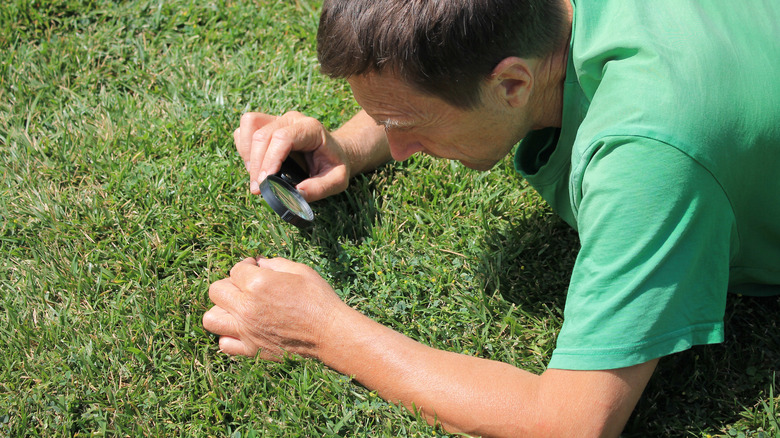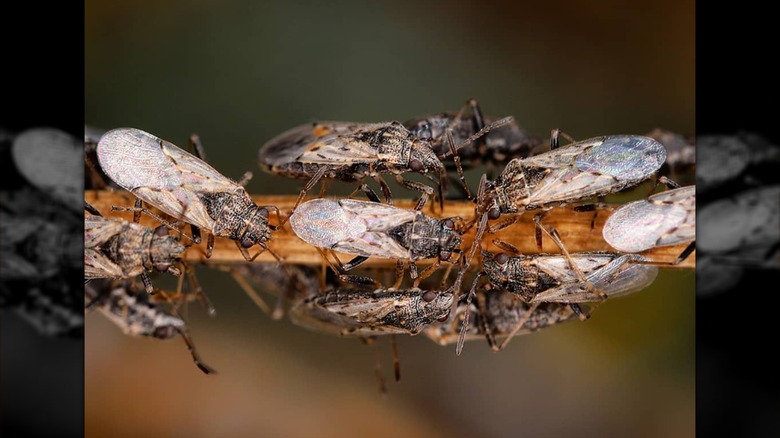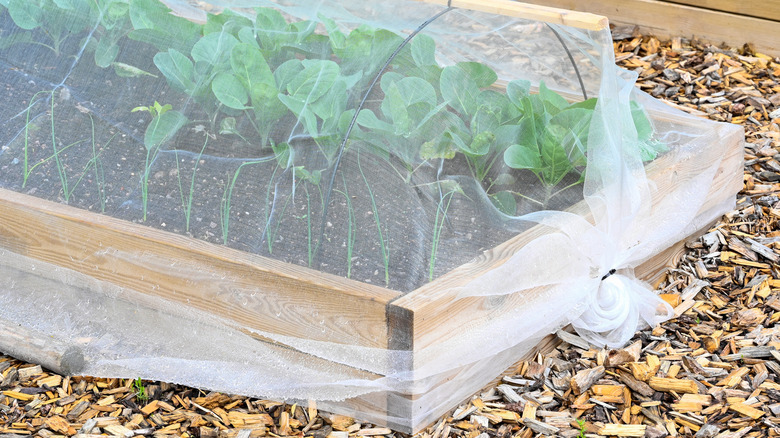Watch Out For These Seed-Like Pests That Can Sap The Beauty From Your Lawn
If you take a peek under a cabbage leaf, near your mustard greens, or on blades of turfgrass, you might spot a congregation of a few oval-shaped brownish-gray bugs just over 4 millimeters long. These are false chinch bugs, also called "seed bugs" or "oat bugs" by some. False chinch bugs and "real" chinch bugs are related, but it's the false chinch bugs that should be on the mental radar of Americans everywhere, especially if you're passionate about your lawn or landscaping. Although they are relatively harmless in small numbers, false chinch bugs can quickly wreak havoc on your yard, especially if certain environmental conditions inspire them to swarm.
You might look at these small insects and wonder how they could possibly present a problem, but they have strength in numbers. In swarms, these are some of the worst garden pests you'll want to banish from your yard immediately, or else they may seriously damage your lawn. Here's what you need to know about false chinch bugs, the specific plants they tend to attack, and how you can responsibly eradicate them from your yard.
False chinch bugs can drain the life from lawns
False chinch bugs (Nysius raphanus) are native to North America and common throughout the United States, but especially prevalent in the southwestern region. These insects can be easily identified by their size, dull brownish color, and overlapping wings that form an X-shape on their back. False chinch bugs can seem to spring up out of nowhere, but there are a few environmental factors that can make them more abundant, including heavy spring rains and ample growth of weeds and cruciferous plants from the mustard family. These common bugs usually aren't that noticeable, but when weeds and vegetation begin to dry out, false chinch bugs may swarm together and search for other wet areas in your yard. They can also move into buildings to shelter away from drought and heat.
Although they don't bite or sting humans, false chinch bugs can be a nuisance, especially when they appear in swarms around your home. These insects have piercing-sucking mouthparts that they use to bore into vegetation and draw out sap. False chinch bugs won't just damage your cruciferous vegetables; they will also feed on potato plants, lettuce, turfgrass, and more. As they suck the hydration and nutrients from the plants, your lawn or garden may start to look scorched and shriveled and eventually die.
Cover plants and reduce watering when possible
False chinch bug swarms and migrations usually peak and subside within about a week, so an easy way to protect your plants is to cover them whenever possible, especially young seedlings. Of course, it's not very feasible to cover your whole lawn, so if false chinch bugs are attacking your turfgrass, you may need to try other tactics. Overwatering could be a lawncare mistake that's attracting bugs to your yard, so cut back on watering your lawn, especially near buildings and when populations are high. Insecticides aren't usually necessary or helpful for controlling false chinch bugs in your yard, but to keep them from sneaking into your home, you can ensure all windows and doorways are tightly sealed and spray a pyrethroid insecticide around the perimeter for extra protection.
Eventually, false chinch bug populations should subside and move away from your home on their own. The best way to keep your lawn from being destroyed by false chinch bugs is to plan ahead of a swarm. You can start by planting specific grass types that are resistant to false chinch bugs, such as floratam or floralawn St. Augustine. Additionally, welcome natural predators of the false chinch bug, including the big-eye bug, an unusual looking bug that will keep pests out of your garden.


